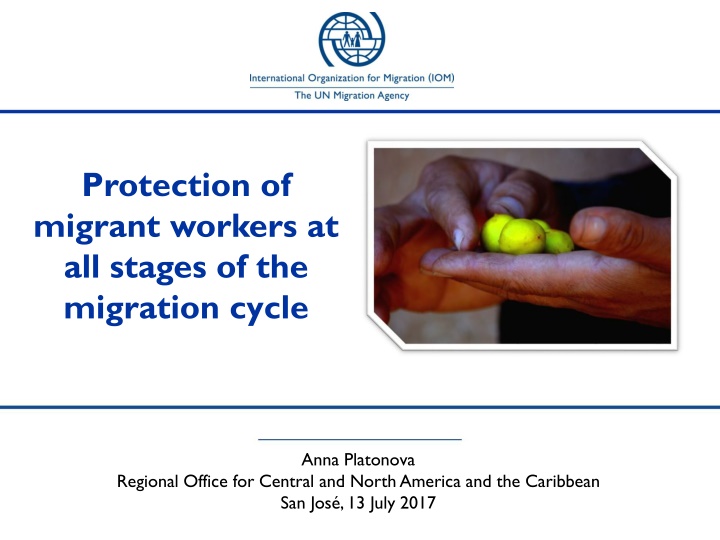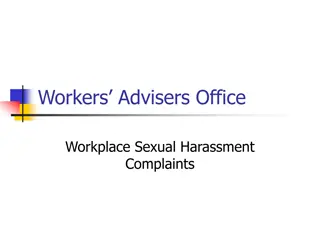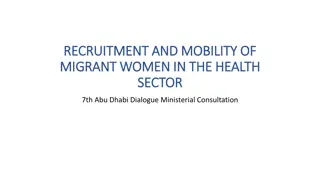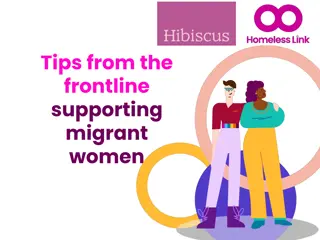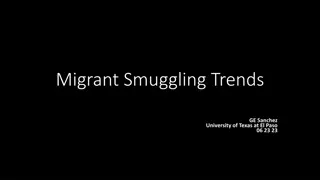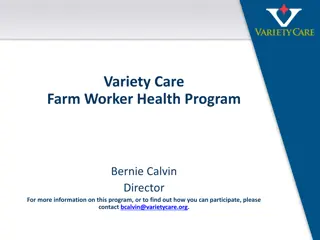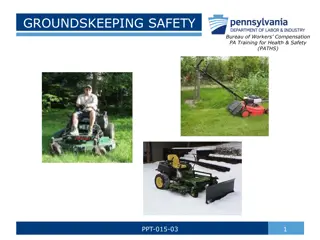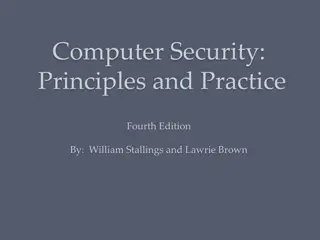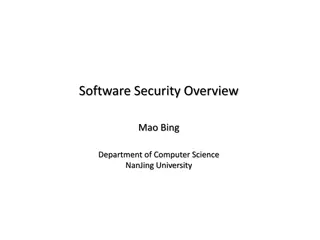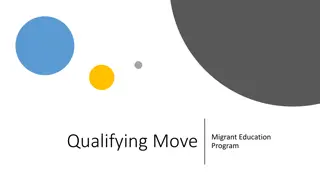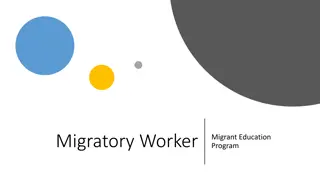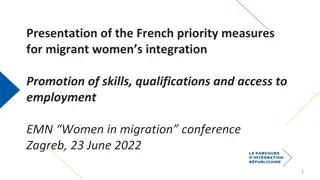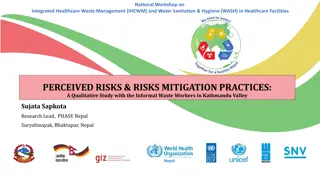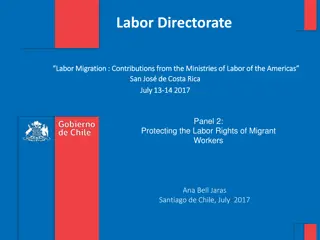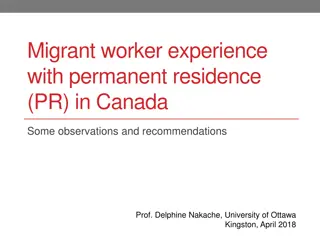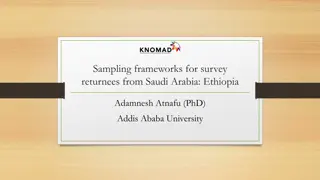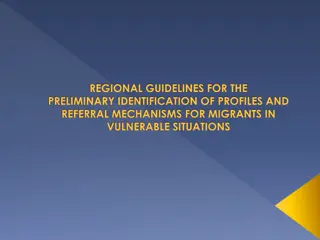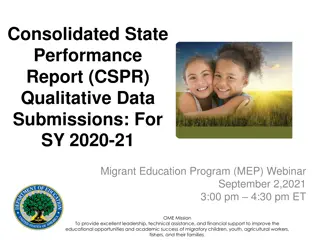Protection of Migrant Workers: Importance and Vulnerabilities
Labour migration plays a crucial role in the global economy, but migrant workers face various vulnerabilities such as work permits tied to employers, cultural barriers, and lack of rights awareness. The International Organization for Migration (IOM) works to protect migrant workers by collaborating with businesses, member states, and stakeholders to create tools, conduct capacity-building workshops, and provide technical assistance to governments. Through research, training, and direct assistance, IOM aims to address the challenges faced by migrant workers at different stages of the migration cycle.
Download Presentation

Please find below an Image/Link to download the presentation.
The content on the website is provided AS IS for your information and personal use only. It may not be sold, licensed, or shared on other websites without obtaining consent from the author.If you encounter any issues during the download, it is possible that the publisher has removed the file from their server.
You are allowed to download the files provided on this website for personal or commercial use, subject to the condition that they are used lawfully. All files are the property of their respective owners.
The content on the website is provided AS IS for your information and personal use only. It may not be sold, licensed, or shared on other websites without obtaining consent from the author.
E N D
Presentation Transcript
Protection of migrant workers at all stages of the migration cycle Anna Platonova Regional Office for Central and North America and the Caribbean San Jos , 13 July 2017
Why is labour migration important? 71% services 150 million international migrant workers 21 million in situation of forced labour 44.3% women 18% industrial 11% ag
Some sources of vulnerability for migrant workers Work permits linked to employers Linguistic barriers Cultural differences Transnational family Costs of migration Discrimination Lack of rights awareness Risk of deportation Lack of access to justice 5
Labour migration process workplace audit/ labour inspection Pre- Return/ onward migration departure, including recruitment Deployment Employment
Global governance gaps Worker pays business model Uneven playing field Lack of transparency Regulatory enforcement gaps
IOM work to protect migrant workers Businesses Businesses Member States Member States Working with stakeholders to create operational tools e.g. IRIS. Regional Consultative Processes (RCPs), GFMD, and other international fora Promoting the employer pays principle with the Leadership Group for Responsible Recruitment Capacity building/ training workshops for government officials, including labour attach s Labour supply chain mapping and analysis Technical assistance for governments to improve regulatory frameworks Training on migration impacts for policy makers /social auditors Increasing the knowledge base through research and publications Pre-departure orientation Multi-stakeholder dialogue Direct assistance to migrants
Questions & Answers Thank you For more information visit: iris.iom.int
